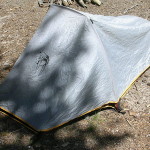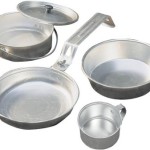If you haven’t done a lot of camping or especially backpacking, you may be unsure about what equipment to bring to camp. It takes time to build up enough experience to make informed decisions. One fellow took three months to hike the entire 2,175 mile Appalachian Trail and learned the hard way! Don’t be like him!
At White Stag Sierra leadership camp, you’ll spend part of your time in camp and from 1-3 days on the trail. The amount of time and the difficulty of the hike depend on the program you are attending and how adventurous your youth staff feel!
White Stag Sierra is a lot of fun but it isn’t a recreational summer camp. There isn’t a trading post, there aren’t any cabins, you probably won’t encounter a flush toilet, and you’ll definitely be enjoying the wide-open Tahoe National Forest! So plan accordingly.
Keep it simple
We supply group equipment, so just bring your personal gear. Here’s a quick guide to three big-ticket items that usually cause new campers the most buyer confusion, and a bonus section on how to keep your personal mess kit simple.
While we can’t tell you exactly what equipment to buy, here are some general guidelines.
Three-season sleeping bag

One of the big decisions is choosing a sleeping bag. We ask you to bring a “3-season backpacking sleeping bag (rated to 32°F)”. So what’s that mean? It means it gets cold at 7,500 in the Tahoe National Forest, even in July, but not that cold. Assuming you wear sweats or similar clothing in your sleeping bag, and that you’re sleeping on a 1″ sleeping pad, you need to find a bag that will keep you comfortable to about 32°.
For details, see REI’s guide to How to choose sleeping bags for backpacking.
Backpacking tent

Another piece of gear that is a challenge to buy the first time is a backpacking tent. You can find them cheap, lightweight, and durable, but never all three. Your challenge is to find that sweet spot between cost and usefulness. Just to make things more complicated, you can choose from dozens of styles, designs, sizes, and features.
For example, at the lowest end you can buy a Coleman Sundome Two Person Tent for around $40 at Walmart—but it weighs over 7 lbs! In the middle of the cost range, REI offers the 5 lb NEMO Galaxi 2P Tent for about $250. Two pounds may not seem like much standing in the store, but you’ll think differently after carrying it on your back for a couple of days! Better tents not only offer more quality, they pack smaller. The Sundome is 24″ x 6″ when packed; the NEMO Galaxi is 6.5 x 18 inches.
So ask yourself: How much use do I want to get out of my tent and how much am I willing to pay?
Want the complete lowdown? Check out REI’s guide to Backpacking Tents: How to Choose.
Backpack: frame or frameless
One item that’s going to make a huge difference to how much you enjoy hiking is your backpack. Since you’ll be hiking for 1-3 days, plan on carrying 35–50 pounds. You want to find a good backpack that transfers the weight to your hips. You have to consider the shoulder straps, the hipbelt, the frame, and the back padding.
Your first choice is whether to buy an external or internal frame backpack. What’s the difference, you say?

Internal backpacks use aluminum stays, plastic frames, curved high-density resin rods, or combinations of these things within the bag to support the load and distribute it across your body. Your load is positioned closer to your body making it easier to walk across rocky terrain. But because your gear is closer to your body, you need to pack it carefully to distribute its weight. Internal backpacks also tend to be more sweaty.

Frame backpacks have a simple exterior frame. The load is positioned farther away from your back, so they are better suited for heavier loads. Your center of gravity is higher, making it good for trails. They tend to be larger, allowing you to carry more stuff–but that may not really be an advantage if you don’t pack carefully.
Whichever style you choose, make sure it has a good, comfortable, and supportive suspension system. In the store, try on the pack and put some real weight in it. Now adjust it to fit your body. Does it still feel good?
Ready to decide? See Backpacker magazine’s guide to Buying a backpack.
Personal mess kit

One last item illustrates how you can both save money and keep your gear simple. Our equipment list calls for a “Personal mess kit”. But that doesn’t mean you need a brand new, shiny, personal mess kit with a bowl, two cups, a pot, and two pans with a custom handle in a waterproof sack, like the Coleman mess kit at right. Besides being bulky, a full mess kit adds precious ounces to your backpack and are harder to clean. Aluminum sucks the heat out of your food and transfers it to your hands, dent easily, and will cost you anywhere from $10 to $30.
We tell you to bring a “spoon, fork, plate, bowl, cup.” If you don’t have a plastic plate, bowl, and cup at home that you can use for camping, you can probably find them at a neighborhood garage sale for about a dollar. All you really need are Lexan utensils, a plastic dish, and an insulated cup.
In summary
If you haven’t done much camping, we guarantee you a great time. We recommend you buy simple and durable, not fancy, equipment that serves your needs both this summer and next.

You must be logged in to post a comment.